


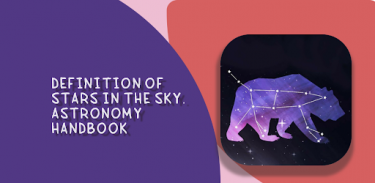
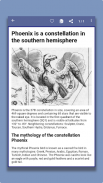

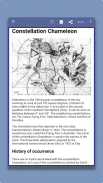
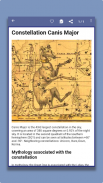
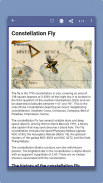
Definition of stars in the sky

Description of Definition of stars in the sky
When studying the starry sky, they use star maps compiled in certain cartographic projections, therefore, when comparing the starry sky with a map, it is necessary to take into account image distortions in these projections. All stars, depending on their apparent brightness, are divided into classes called stellar magnitudes.
In our reference book on astronomy, almost all sections of modern astronomy are presented: a historical overview, the basics of practical astronomy, the laws of motion of celestial bodies, the structure of the solar system, methods of astronomical research, basic information about the sun, stars, planets, galaxies and the universe as a whole. To work with the textbook, knowledge of the basic sections of mathematics, physics and chemistry is required within the scope of a high school course.
Here you will learn information about the starry sky in real time and celestial objects outside our solar system stretching from Andromeda to Cetus. The objects are grouped according to the astronomy of the starry sky, and their definitions include the names of the atlas of the cosmos, coordinates, classifications, and physical descriptions of the starry sky. After studying a sky map that provides a beginner with enough satellite imagery to track roughly 80 percent of the material's body, the guide provides a comprehensive overview of the thousands of celestial objects outside our solar system that are within the reach of telescopes in our solar system.
The information in the handbook is grouped according to the constellations in which they appear. Each constellation is divided into four thematic sections: a list of double and multiple stars; list of variable stars; a list of star clusters, nebulae and galaxies; and descriptive notes. Each object has names, celestial coordinates, classification, and complete physical description. They, together with the star atlas, will help you find and identify almost every object of interest.
But the joy of the book is the descriptive notes that follow. They cover history, unusual movements or appearances, and currently accepted explanations for such visible phenomena as white dwarfs, novae and supernovae, Cepheids, world-type variables, dark nebulae, gas nebulae, eclipsing binaries, the Large Magellanic Cloud, evolution. star cluster and hundreds of other topics, many of which are difficult to find in one place. Hundreds of diagrams and other visual aids are included to aid in identification. Many photographs have captured these objects and are works of beauty that reflect the enthusiasm of the star people in relation to their

























